“In my mute frozen state, time and space took on a fascinating new quality, measured from one liberated movement to another, and I created an internal spoken dialogue with the world around me. I figured that if I said things loud enough in my head, the message would shoot through my eyes. Hi. I’d blink my eyes a bit, and regard my new human friend, while they regarded me. As they dropped money in the can, I’d lock my eyes onto theirs and think: Thank you. Blink. Here, take a flower. Blink. And if I was in a particularly good mood: I love you. Blink. What I hadn’t anticipated was the sudden powerful encounters with people. Specially lonely people. Who looked like they hadn’t talked to anyone in ages. I was amazed by the intimate moments of prolonged eye contact, happening on the busy city sidewalk as traffic whizzed by, as sirens blared, as street vendors hawked their wares and activists thrust flyers at every passerby, […] where more than a second or two of a direct, silent gaze between strangers is usually verboten. My eyes would say: Thank you. I see you. And their eyes would say: Nobody ever sees me. Thank you.”
― Amanda Palmer (The Art of Asking: How I Learned to Stop Worrying and Let People Help)
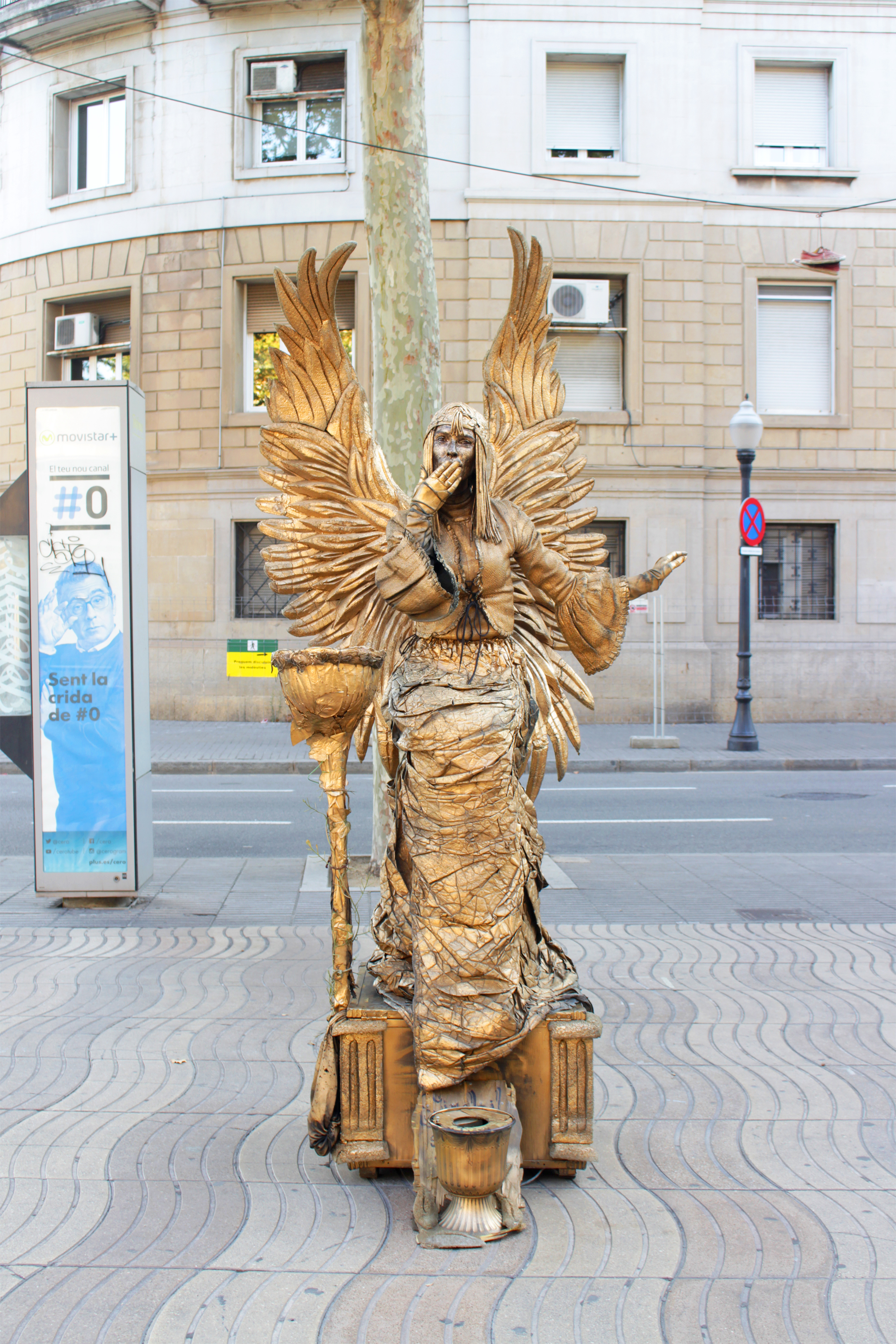
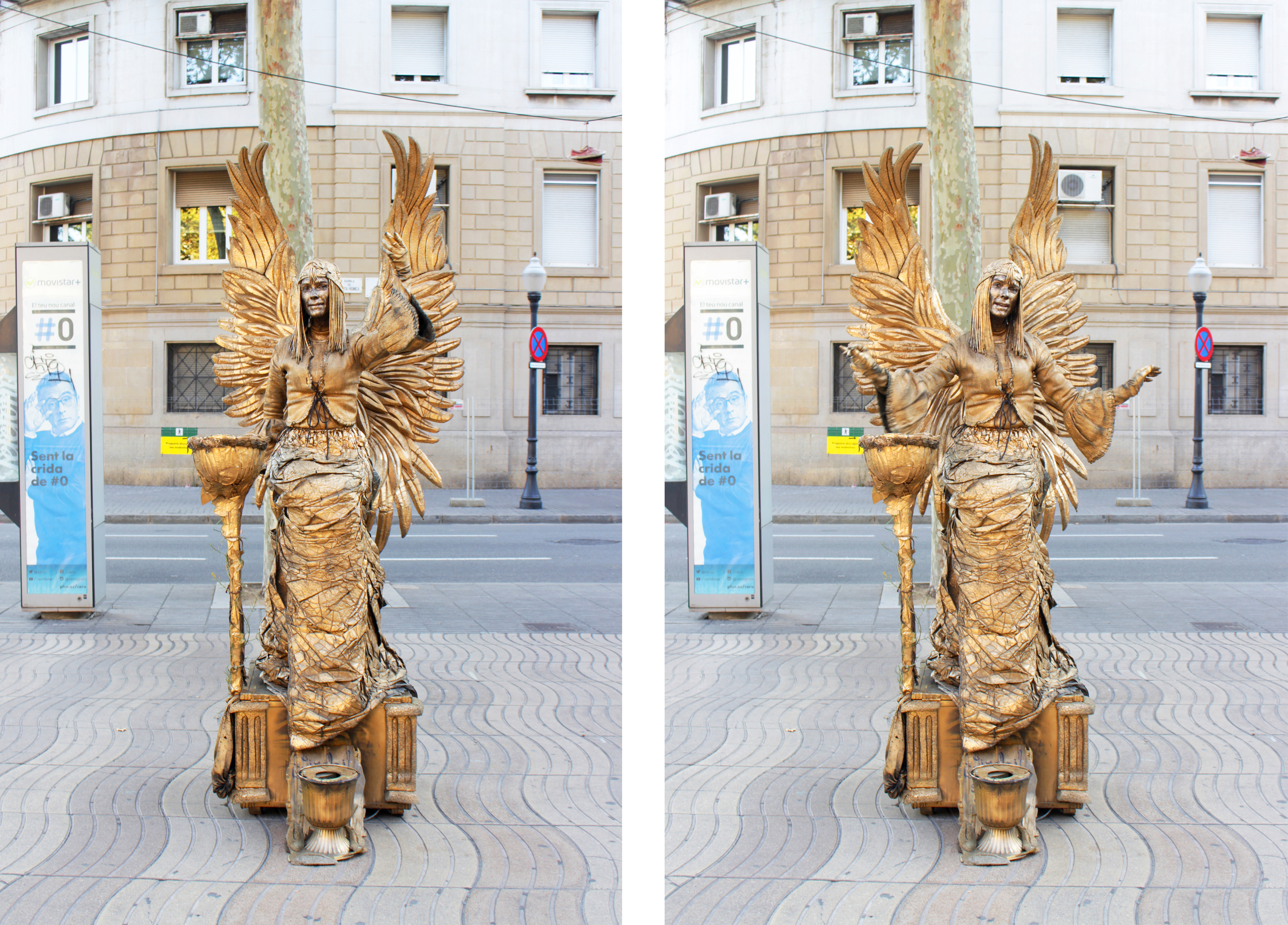 If you’ve been to Barcelona, you’ve probably walked through La Rambla, the most emblematic street of the Catalan city and one of its liveliest and busiest spots. Constantly bustling with tourists and locals alike, the street is a colorful clutter of merchants, souvenir kiosks, cafes, newsstands, florists, painters and caricaturists. As you make your way to the end of the avenue – right before reaching the Mirador de Colón – you will meet a curious group of street performers: frozen characters in remarkably elaborate costumes and makeup, propped up on boxes and lined up on either side of the street. A multi-colored army of mythological winged creatures, funny whimsical characters, iconic celebrities and historical figures, stands here, still, for hours – eliciting the curiosity of passersby, and inviting them to drop a coin into their hat and bring them to life. Each statue makes their best effort to capture the imagination of adults and children alike, through their costumes and performances. Some even put on little spectacles whenever a coin is dropped – delighting, surprising, or even scaring the crowd.
If you’ve been to Barcelona, you’ve probably walked through La Rambla, the most emblematic street of the Catalan city and one of its liveliest and busiest spots. Constantly bustling with tourists and locals alike, the street is a colorful clutter of merchants, souvenir kiosks, cafes, newsstands, florists, painters and caricaturists. As you make your way to the end of the avenue – right before reaching the Mirador de Colón – you will meet a curious group of street performers: frozen characters in remarkably elaborate costumes and makeup, propped up on boxes and lined up on either side of the street. A multi-colored army of mythological winged creatures, funny whimsical characters, iconic celebrities and historical figures, stands here, still, for hours – eliciting the curiosity of passersby, and inviting them to drop a coin into their hat and bring them to life. Each statue makes their best effort to capture the imagination of adults and children alike, through their costumes and performances. Some even put on little spectacles whenever a coin is dropped – delighting, surprising, or even scaring the crowd.
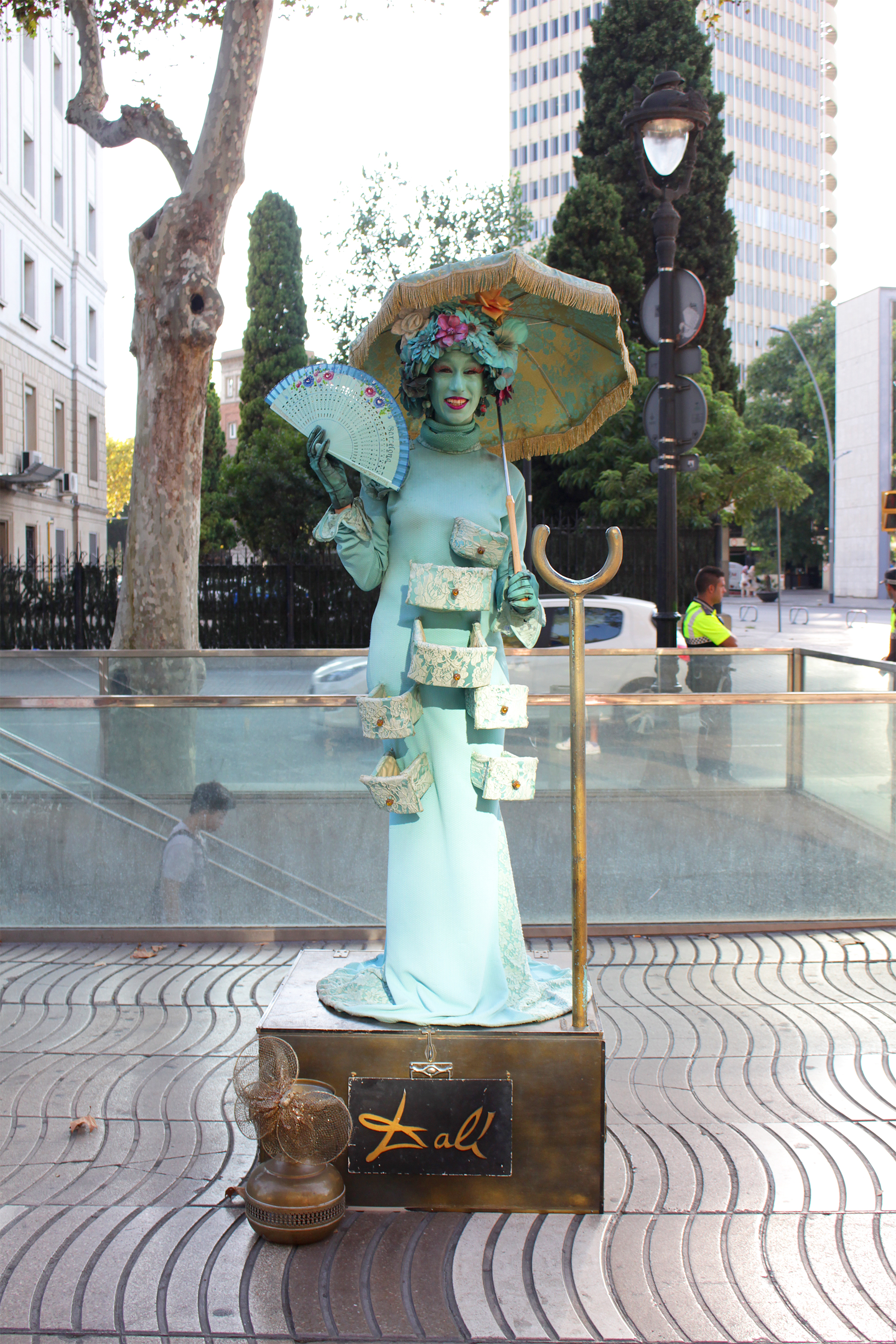
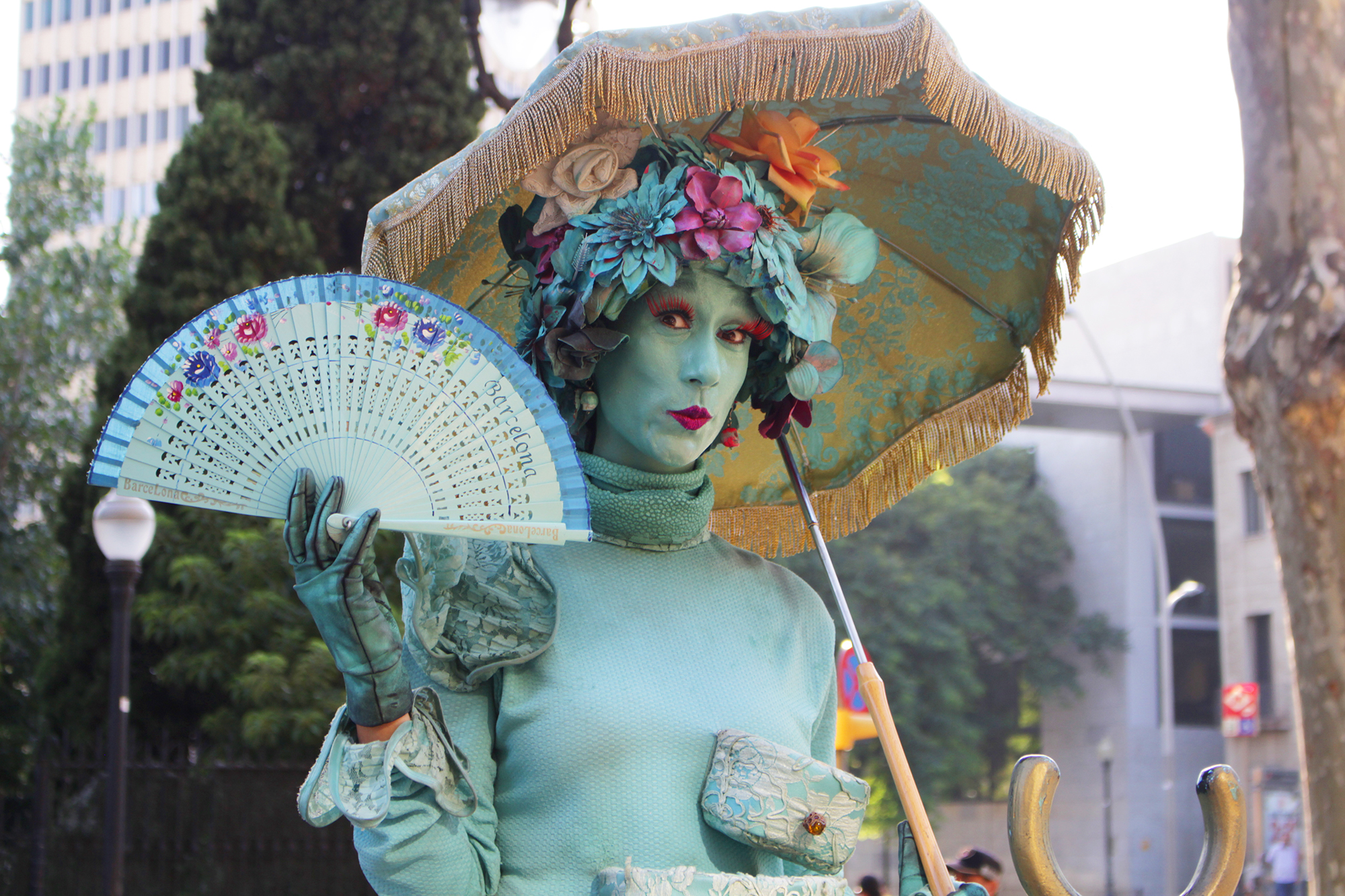
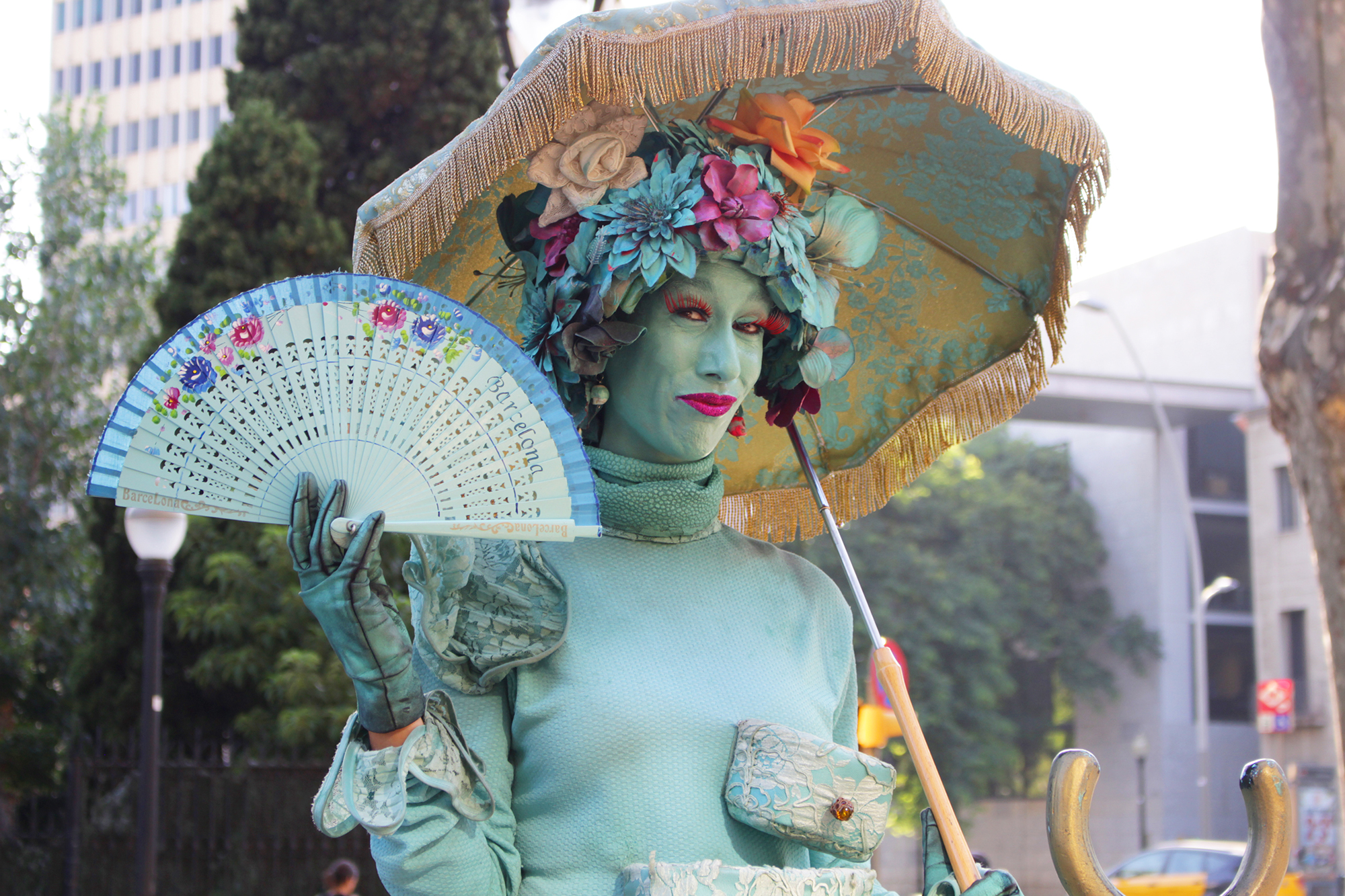

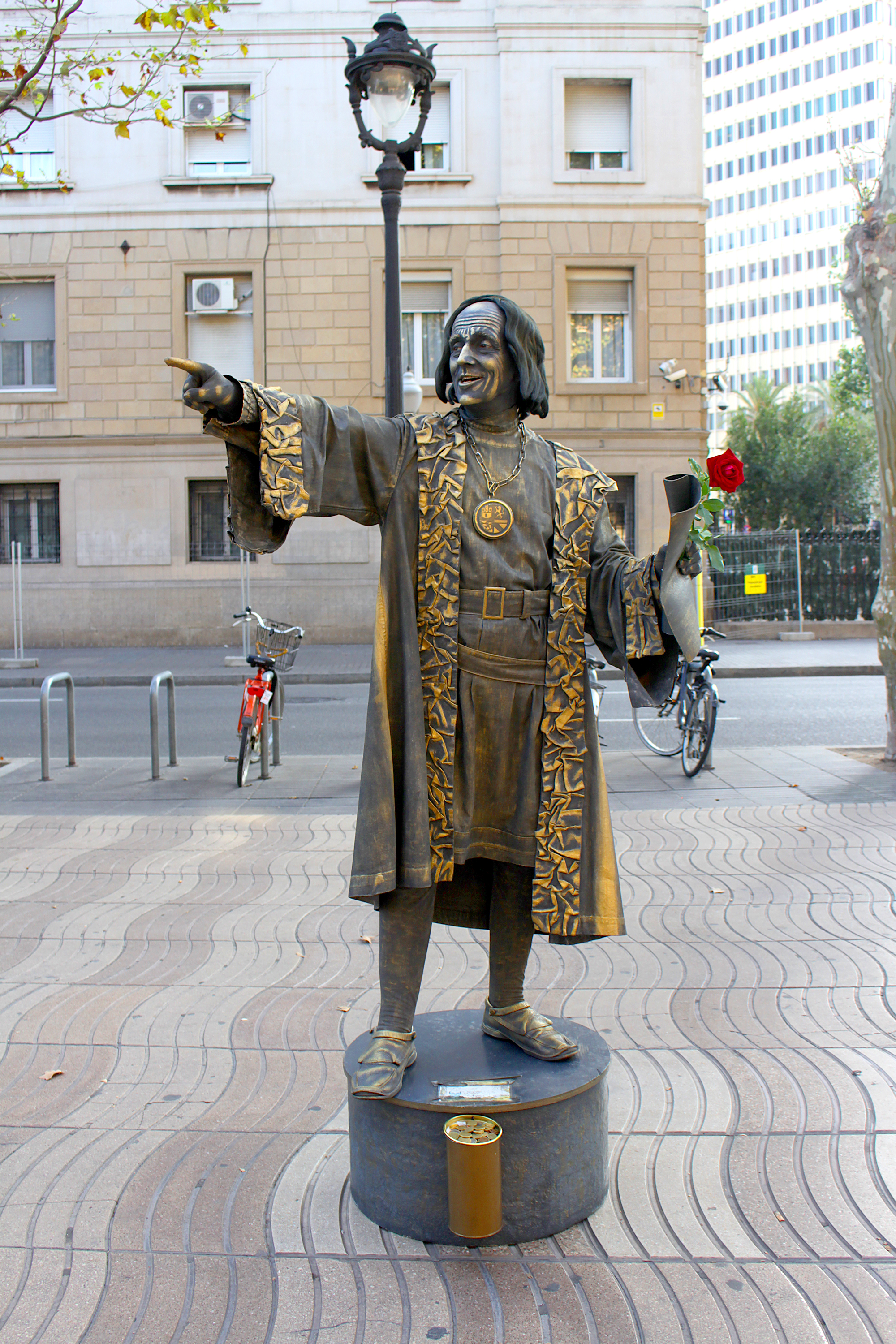
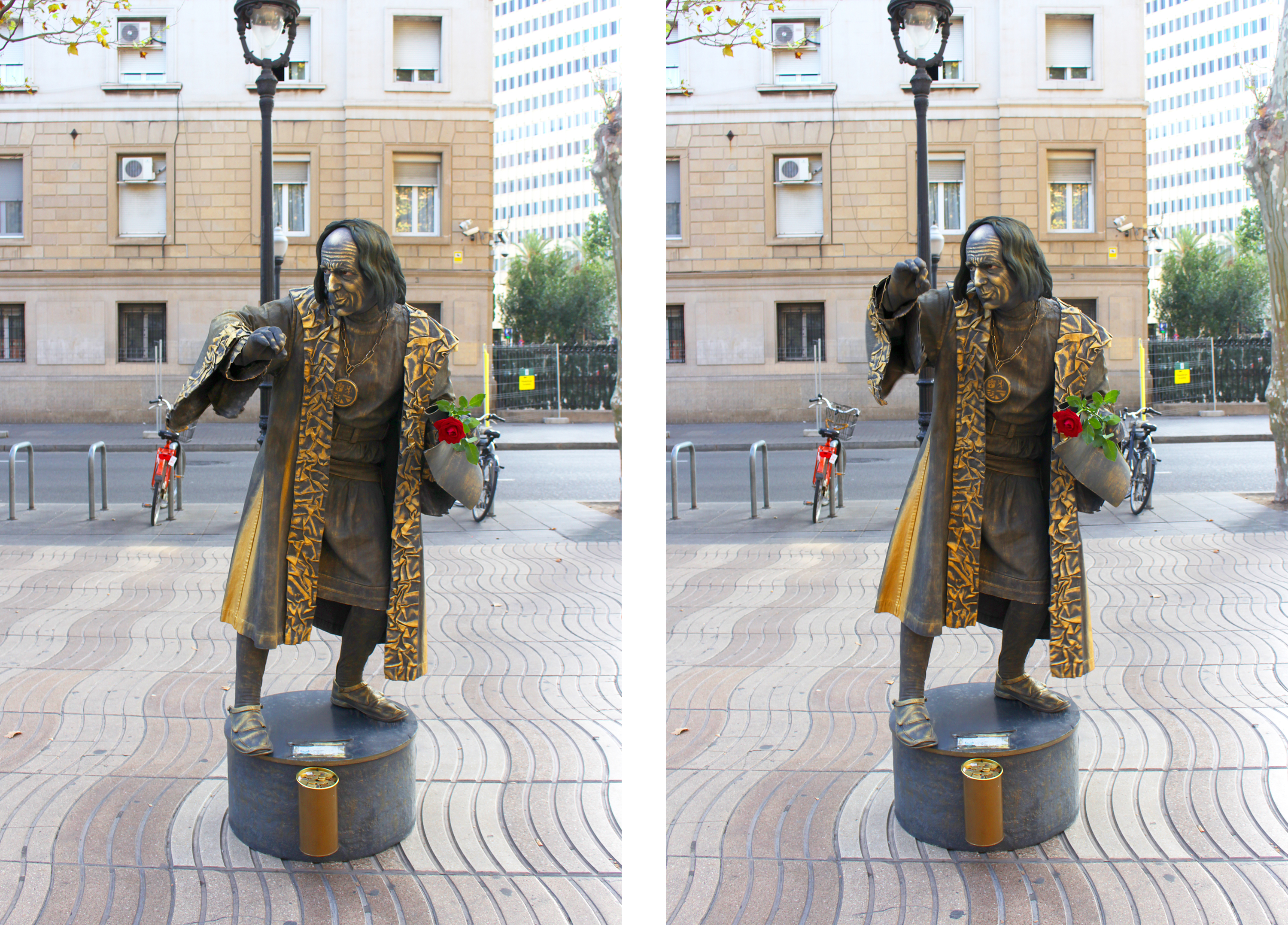
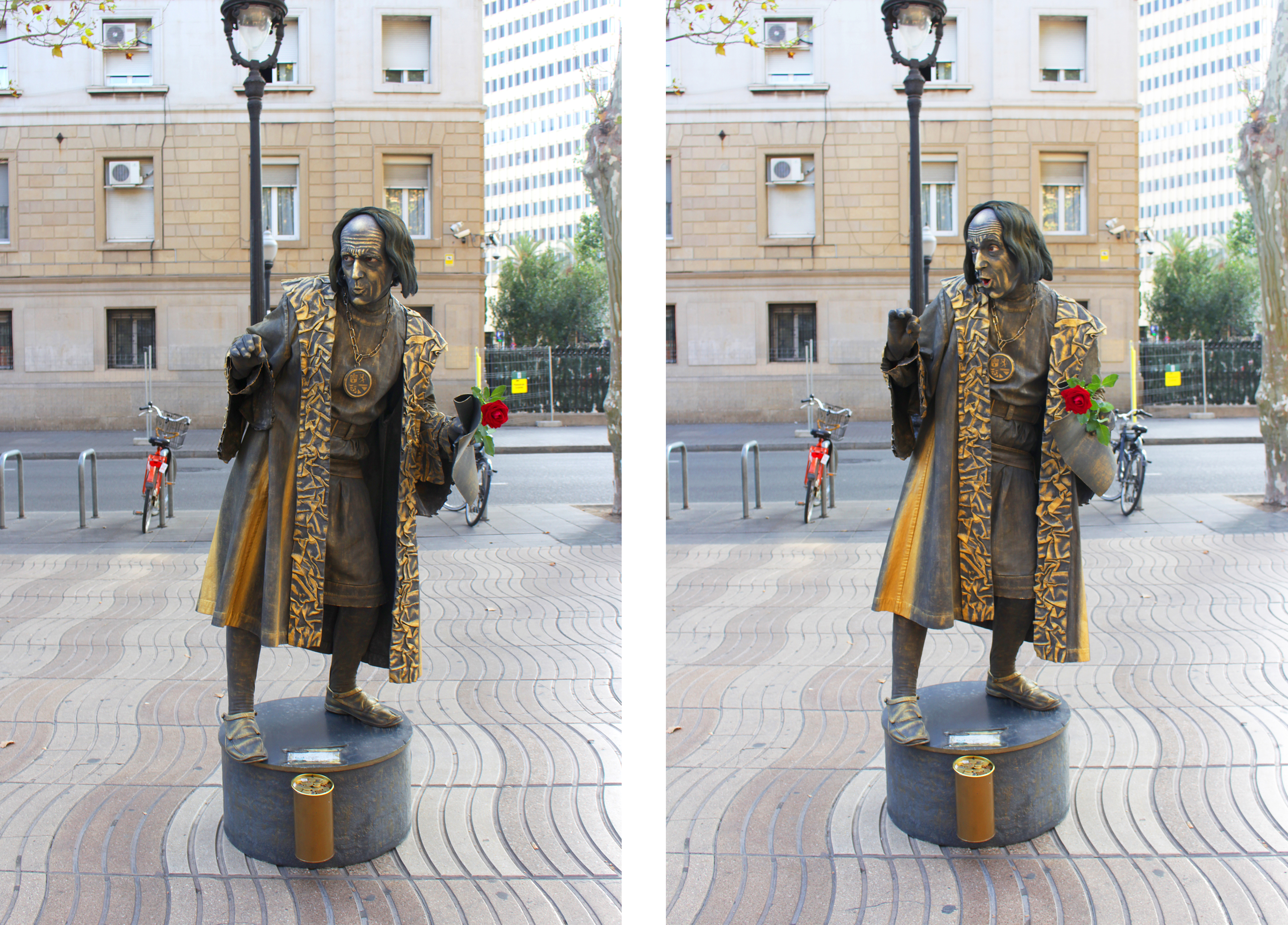
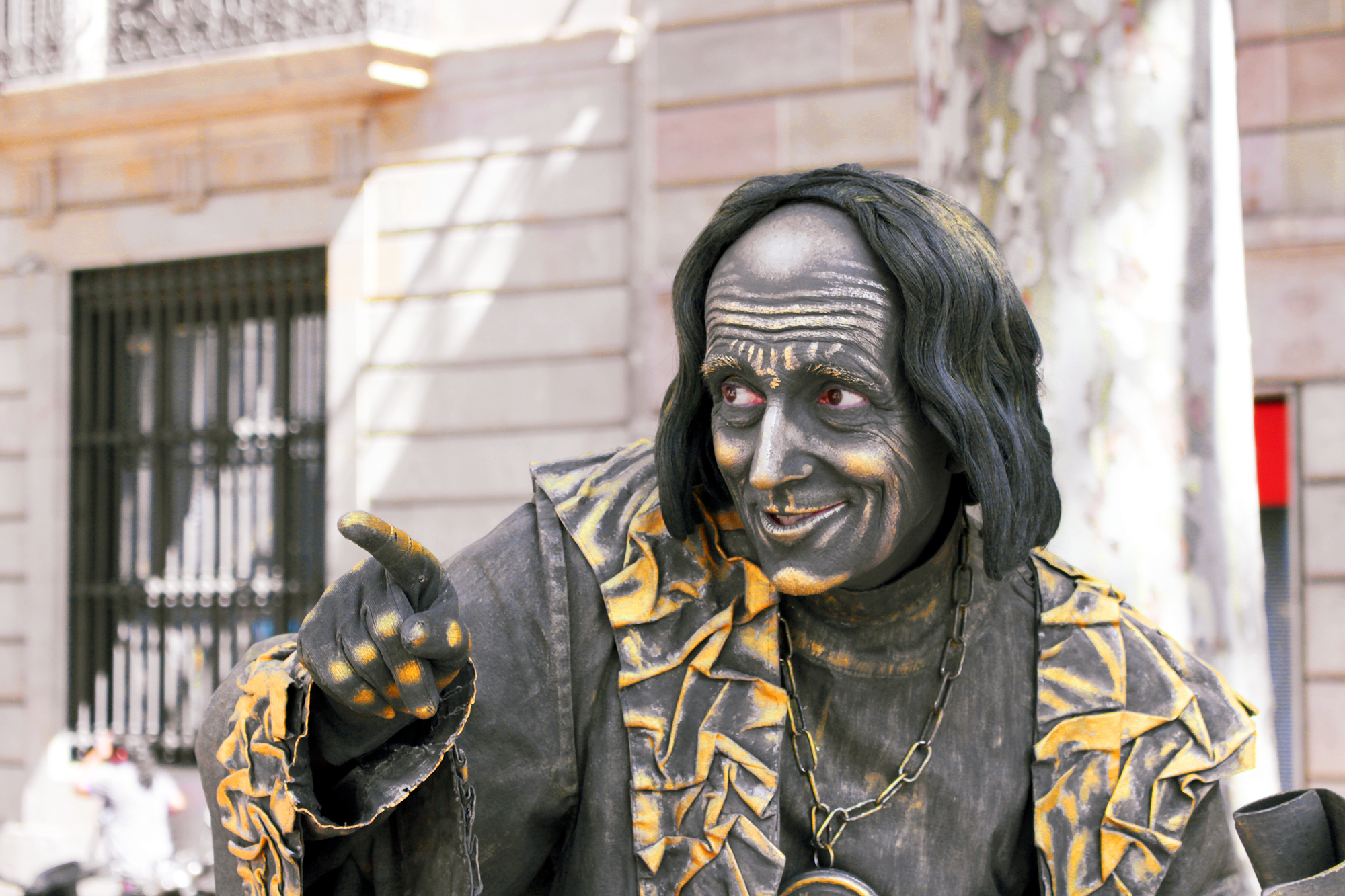
 Passing through La Rambla almost every day for a month, I always stopped to watch the living statues. And every time, I thought about Amanda Palmer (a.k.a. Amanda Fucking Palmer). I had recently read and loved her thought-provoking book The Art of Asking. In it, Amanda recounts her experience of working as a living statue called “The Eight Foot Bride” in Harvard Square, before she started her musical career as part of the Dresden Dolls, and later as a solo artist. She writes in detail about the interactions she had with passersby, offering an in-depth and fascinating account of the life of a street performer, and the many feelings and struggles associated with being and becoming an independent artist. She explores the idea of asking the audience for help, both as a living statue and as a musician, expanding on her very popular TED talk. If you’re an artist, or interested in creativity in general, I highly recommend you check out her book (you can find the trailer here). You can also watch her inspiring interview with Maria Popova, and listen to her discussion on the Tim Ferriss show – one of my favorite episodes of the podcast.
Passing through La Rambla almost every day for a month, I always stopped to watch the living statues. And every time, I thought about Amanda Palmer (a.k.a. Amanda Fucking Palmer). I had recently read and loved her thought-provoking book The Art of Asking. In it, Amanda recounts her experience of working as a living statue called “The Eight Foot Bride” in Harvard Square, before she started her musical career as part of the Dresden Dolls, and later as a solo artist. She writes in detail about the interactions she had with passersby, offering an in-depth and fascinating account of the life of a street performer, and the many feelings and struggles associated with being and becoming an independent artist. She explores the idea of asking the audience for help, both as a living statue and as a musician, expanding on her very popular TED talk. If you’re an artist, or interested in creativity in general, I highly recommend you check out her book (you can find the trailer here). You can also watch her inspiring interview with Maria Popova, and listen to her discussion on the Tim Ferriss show – one of my favorite episodes of the podcast.
I would often gather my loose change and go to the end of La Rambla in the morning, hoping to see the living statues as they were getting ready. It’s a fascinating thing, watching a seemingly ordinary person slowly transform themselves into a mythical creature. I was particularly intrigued by the performance of the Golden Angel. After some research, I found out that the woman behind the costume is Caren Valderrama, a professional performance artist who works with a collective called Alucinarte Group, and that the Golden Angel is only one of her many alter egos. You can watch a segment about her at the end of the post.
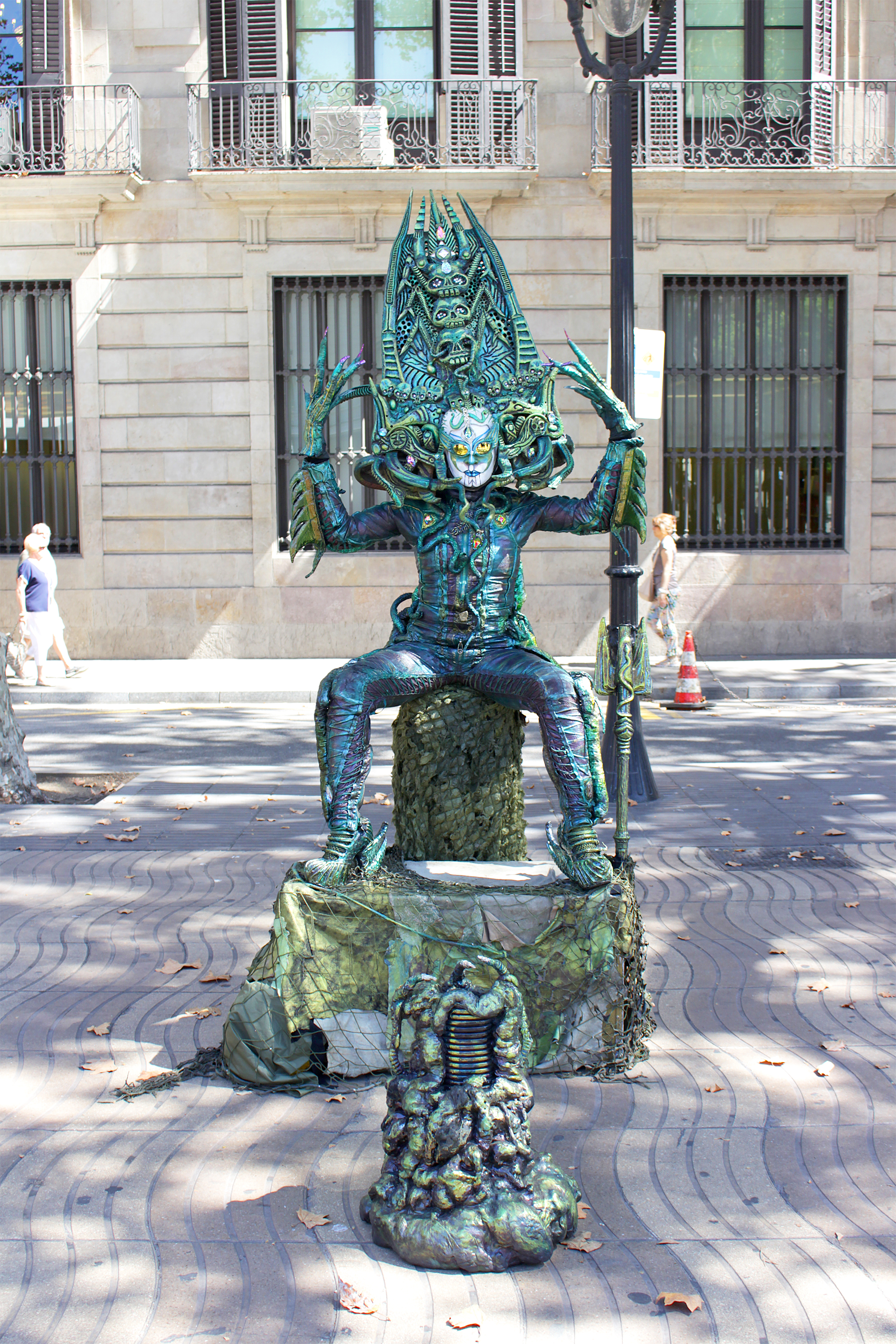





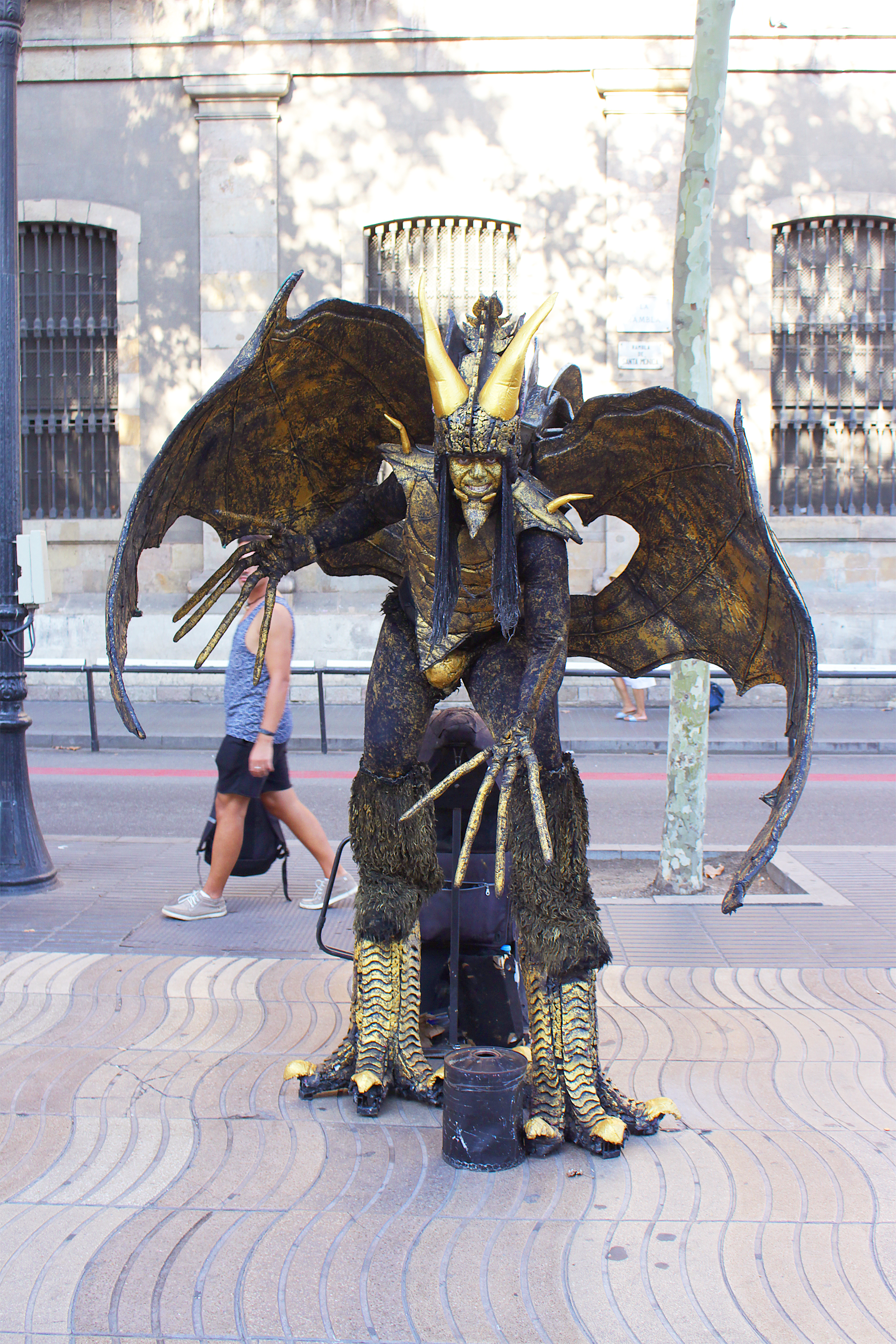
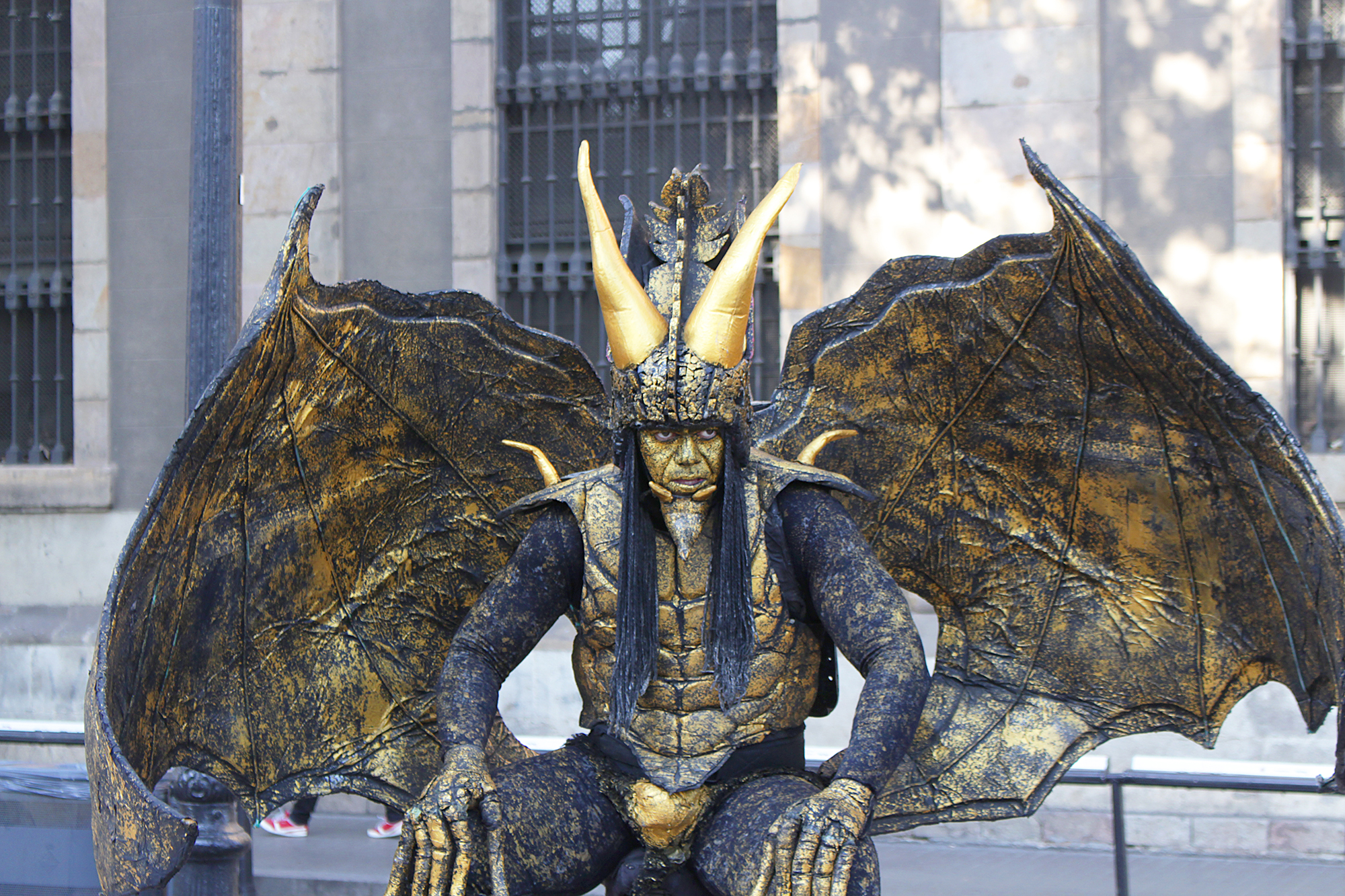

 I will leave you with some of my favorite excerpts from The Art of Asking, in which Amanda Palmer shares her thoughts and feelings about performing as a living statue, being and becoming an artist, and the act – and art – of asking.
I will leave you with some of my favorite excerpts from The Art of Asking, in which Amanda Palmer shares her thoughts and feelings about performing as a living statue, being and becoming an artist, and the act – and art – of asking.
On being a living statue:
“[…] They wanted to be entertained. But they also wanted something more. They wanted connection. It dawned on me, standing there in my white face paint and tutu, that I was effectively working in a service position: A strange combination of magician, cocktail hostess and court jester. A strange, coin-operated jukebox of basic, kind, human encounters.”
“It is an interesting thing, a white-painted face. Its a historically rich signifier, the onion layer of clown-white cream covering the skin like paper-thin mask, a universal invitation from one human being to another that says: Staring at my face and making eye-contact is acceptable and encouraged. […] I liked giving permission to people to look at my face. Not so much because I wanted them to look at me, look at me, look at me, but because I wanted them to feel invited. To meet my gaze, to share a moment. And I knew the game worked. I knew that having invited them into my face like a host invites a guest into a kitchen, I would be equally invited to look back into theirs. Then we could see each other. And in that place lies the magic. I see you. Believe me. Ask any great actor, sometimes the mask is the tool that lets you get at the truth.”
“It’s really easy to love passing strangers unconditionally. They demand nothing of you. It is really hard to love people unconditionally when they can hurt you.”
“Sometimes, up on the box, I would fall in love with people. Pretty often, come to think of it. It was easy, given how safe and swaddled I was up there in my cloud of pretty white untouchable stillness. No commitment. Just this, just now, just us. Occasionally, one of the more broken-looking homeless people of Harvard square would approach me, drop a dollar in, and I would offer my flower. We’d look at each other. And sometimes their faces would crumple. And tears would appear. I would look at them. Hi. I see you there. I can’t believe you just gave me a dollar. You probably need it more than me. I’ve been watching you circle this plaza all day asking people for money, and I hope to God you know that you and I are in this moment exactly the same.“
“It took a few months of hardcore statue work to really find my footing and develop this sense of deep gratitude for the sliver of the population, however small, that was willing to tune their head frequencies to the Art Channel for a moment, interrupting their march to work. That ongoing sense of appreciation shaped my constitution in a fundamental way. I didn’t just feel a fleeting sense of thanks for each generous person who stopped. I had been hammered into a gratitude-shaped vessel and would never take for granted those willing to slow down and connect.”

 On being an artist:
On being an artist:
“There’s no “correct path” to becoming a real artist. You might think you’ll gain legitimacy by going to art school, getting published, getting signed to a record label. But it’s all bullshit, and it’s all in your head. You’re an artist when you say you are. And you’re a good artist when you make somebody else experience or feel something deep or unexpected.”
“As I moved through my life as a statue and later as a musician, I started to understand. There’s a difference between wanting to be looked at and wanting to be seen. When you are looked at, your eyes can be closed. You suck energy, you steal the spotlight. When you are seen, your eyes must be open, and you are seeing and recognizing your witness. You accept energy and you generate energy. You create light. One is exhibitionism, the other is connection. Not everybody wants to be looked at. Everybody wants to be seen.”
“The Fraud Police are the imaginary, terrifying force of ‘real’ grown-ups who you believe – at some subconscious level – are going to come knocking on your door in the middle of the night, saying: We’ve been watching you, and we have evidence that you have NO IDEA WHAT YOU’RE DOING. You stand accused of the crime of completely winging it, you are guilty of making shit up as you go along, you do not actually deserve your job, we are taking everything away and we are TELLING EVERYBODY.”
“Here’s the thing: all of us come from some place of wanting to be seen, understood, accepted, connected. Every single one of us wants to be believed. Artists are often just…louder about it.”
“Collecting the dots. Then connecting them. And then sharing the connections with those around you. This is how a creative human works. Collecting, connecting, sharing.”
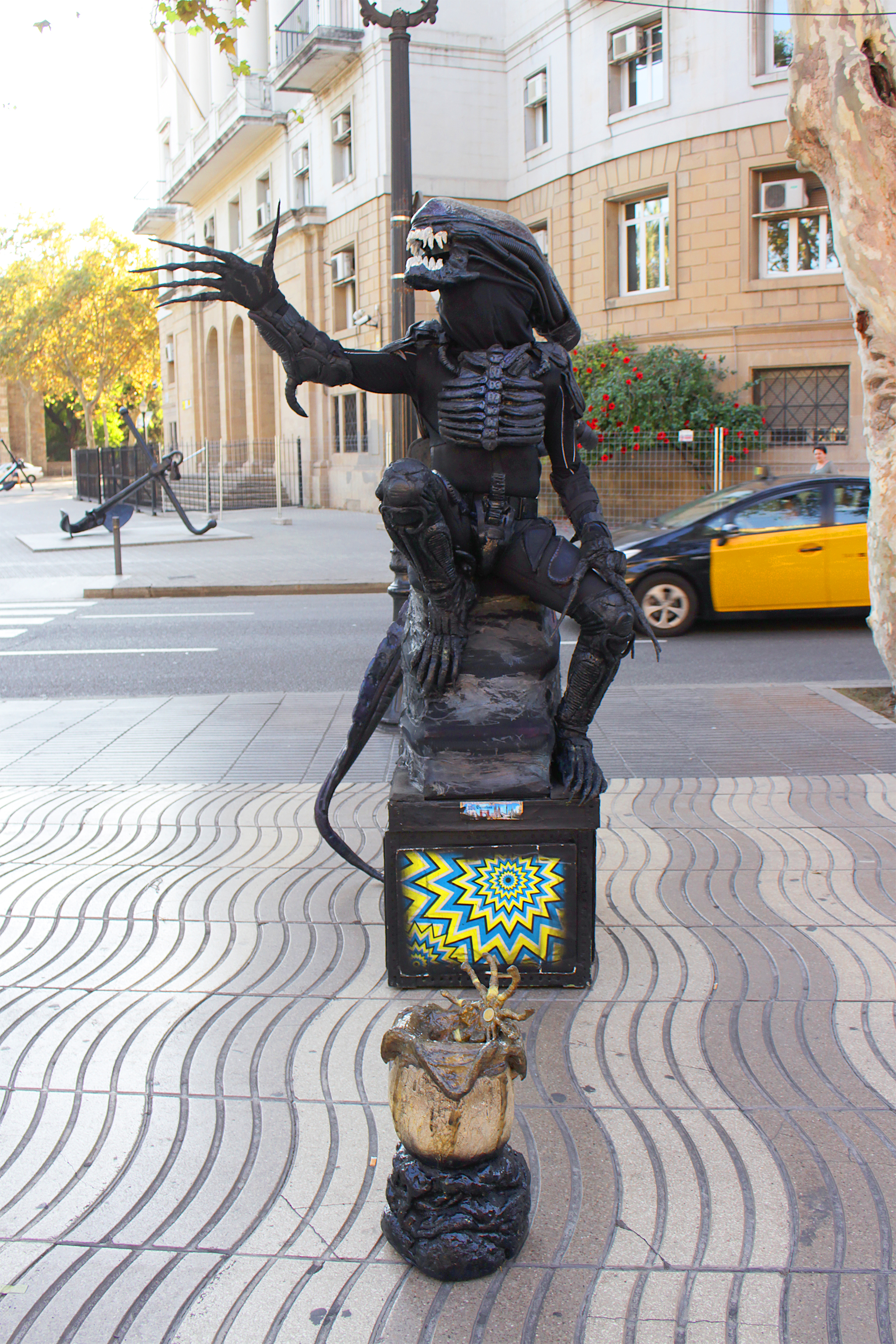
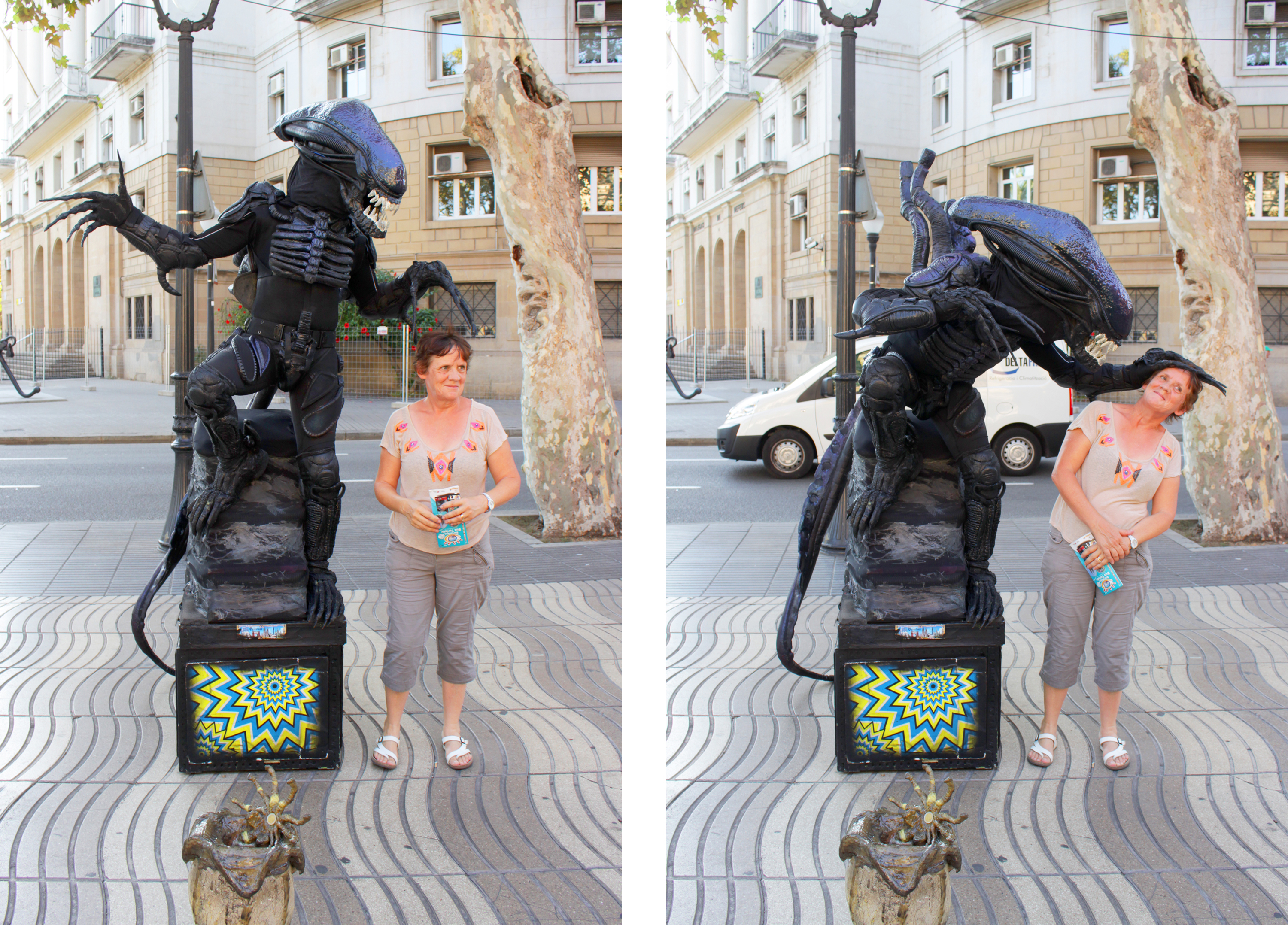
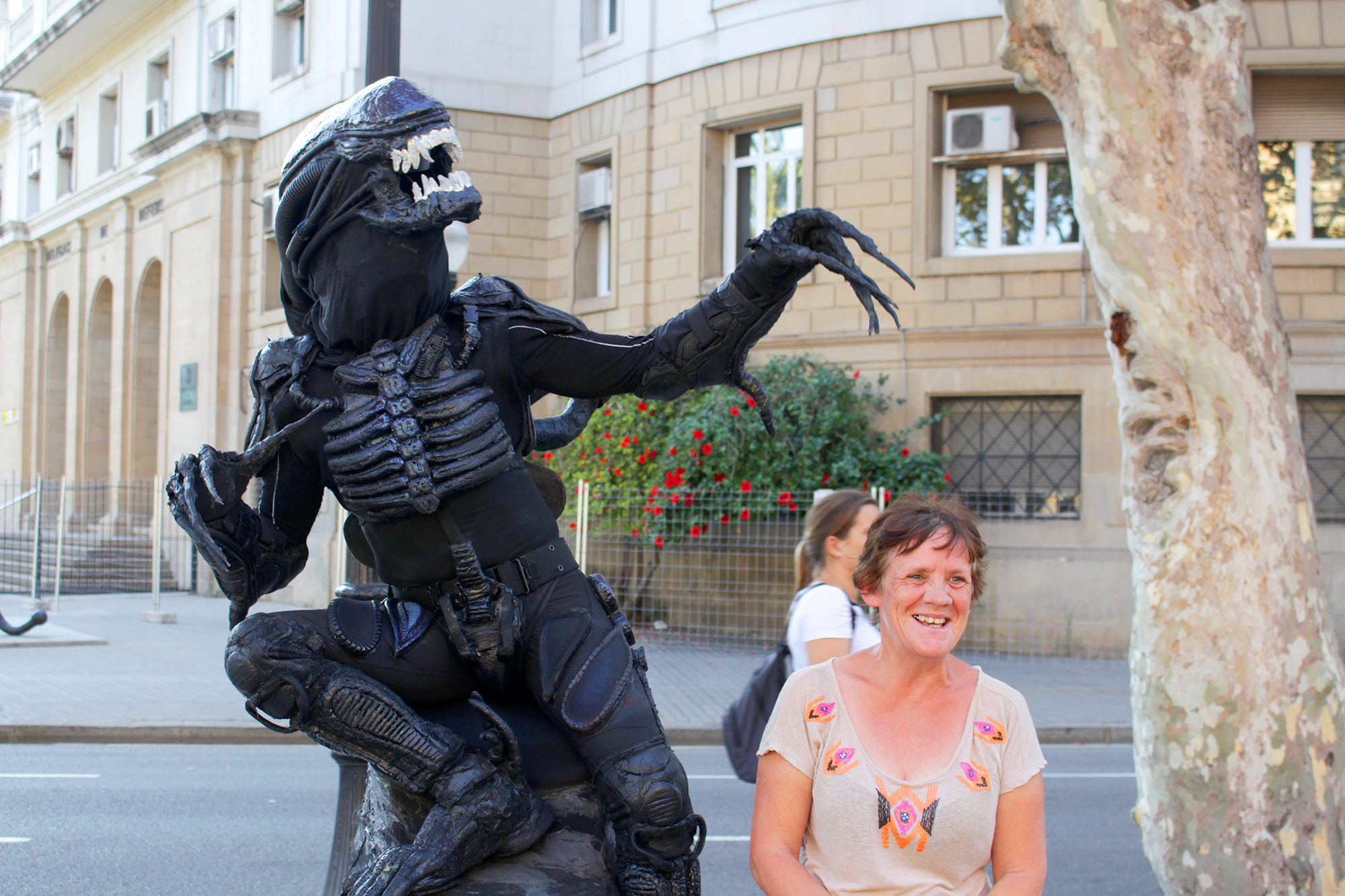




 On asking:
On asking:
“Asking for help with shame says: You have the power over me. Asking with condescension says: I have the power over you. But asking for help with gratitude says: We have the power to help each other.”
“From what I’ve seen, it isn’t so much the act of asking that paralyzes us – it’s what lies beneath: the fear of being vulnerable, the fear of rejection, the fear of looking needy or weak. The fear of being seen as a burdensome member of the community instead of a productive one. It points, fundamentally, to our separation from one another.”
“American culture in particular has instilled in us the bizarre notion that to ask for help amounts to an admission of failure. But some of the most powerful, successful, admired people in the world seem, to me, to have something in common: they ask constantly, creatively, compassionately, and gracefully. And to be sure: when you ask, there’s always the possibility of a no on the other side of the request. If we don’t allow for that no, we’re not actually asking, we’re either begging or demanding. But it is the fear of the no that keeps so many of our mouths sewn tightly shut.”
“When you examine the genesis of great works of art, successful start-ups, and revolutionary shifts in politics, you can always trace back a history of monetary and non-monetary exchange, the hidden patrons and underlying favors. We may love the modern myth of Steve Jobs slaving away in his parents’ garage to create the first Apple computer, but the biopic doesn’t tackle the potentially awkward scene in which — probably over a macrobiotic meatloaf dinner — Steve had to ask his parents for the garage. All we know is that his parents said yes. And now we have iPhones. Every artist and entrepreneur I know has a story of a mentor, teacher, or unsung patron who loaned them money, space, or some kind of strange, ass-saving resource. Whatever it took.”
“Thoreau wrote in painstaking detail about how he chose to remove himself from society to live “by his own means” in a little 10-foot by 15-foot hand-hewn cabin on the side of a pond. What he left out of Walden, though, was the fact that the land he built on was borrowed from his wealthy neighbor, that his pal Ralph Waldo Emerson had him over for dinner all the time, and that every Sunday, Thoreau’s mother and sister brought over a basket of freshly-baked goods for him, including donuts. The idea of Thoreau gazing thoughtfully over the expanse of transcendental Walden Pond, a bluebird alighting onto his threadbare shoe, all the while eating donuts that his mom brought him just doesn’t jibe with most people’s picture of him of a self-reliant, noble, marrow-sucking back-to-the-woods folk-hero.”
“Taking the donuts is hard for a lot of people. It’s not the act of taking that’s so difficult, it’s more the fear of what other people are going to think when they see us slaving away at our manuscript about the pure transcendence of nature and the importance of self-reliance and simplicity. While munching on someone else’s donut. Maybe it comes back to that same old issue: we just can’t see what we do as important enough to merit the help, the love. Try to picture getting angry at Einstein devouring a donut brought to him by his assistant, while he sat slaving on the theory of relativity. Try to picture getting angry at Florence Nightingale for snacking on a donut while taking a break from tirelessly helping the sick. To the artists, creators, scientists, non-profit-runners, librarians, strange-thinkers, start-uppers and inventors, to all people everywhere who are afraid to accept the help, in whatever form it’s appearing: Please, take the donuts. To the guy in my opening band who was too ashamed to go out into the crowd and accept money for his band: Take the donuts. To the girl who spent her twenties as a street performer and stripper living on less than $700 a month who went on to marry a best-selling author who she loves, unquestioningly, but even that massive love can’t break her unwillingness to accept his financial help, please…. Everybody. Please. Just take the fucking donuts.”
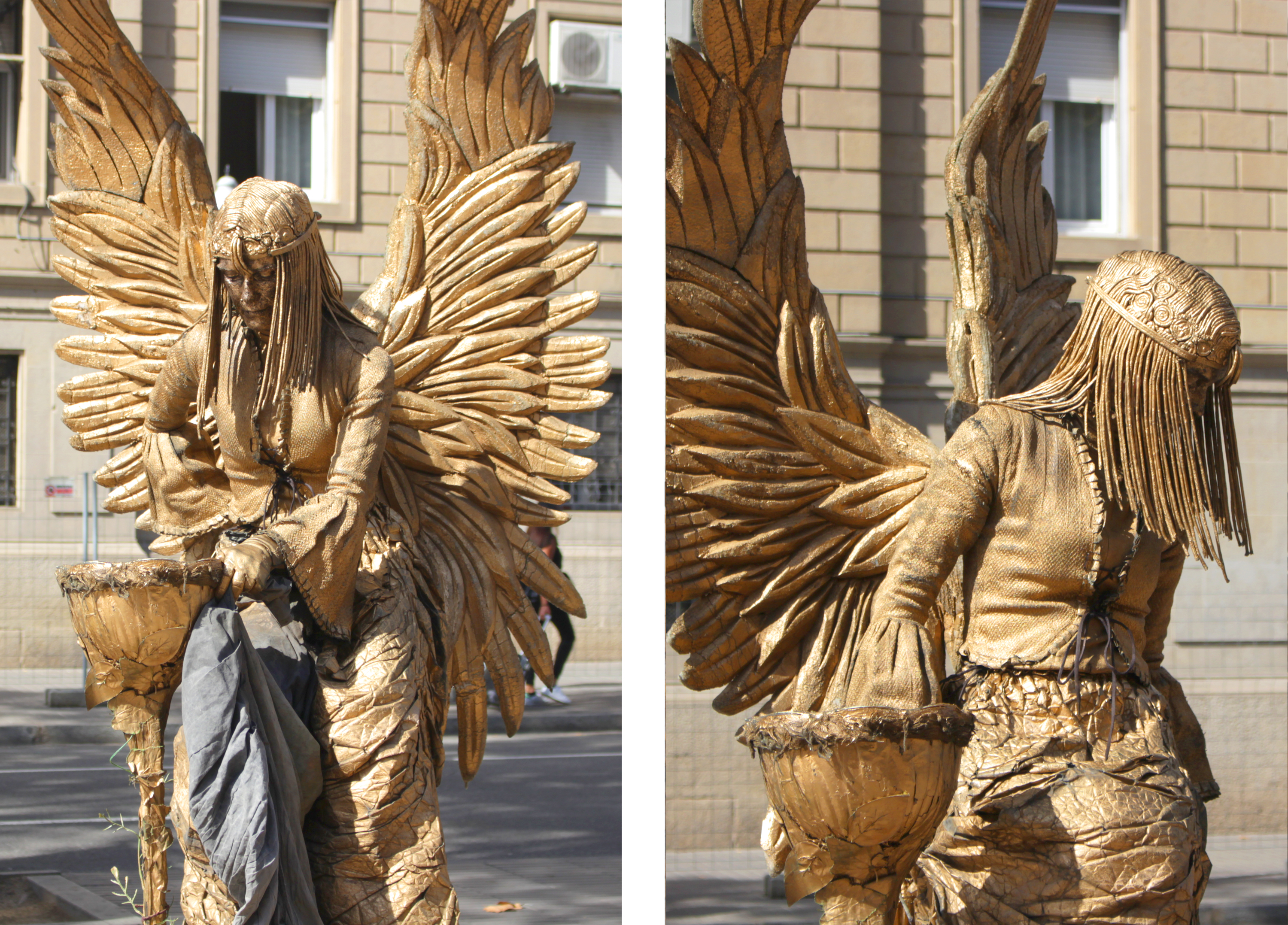
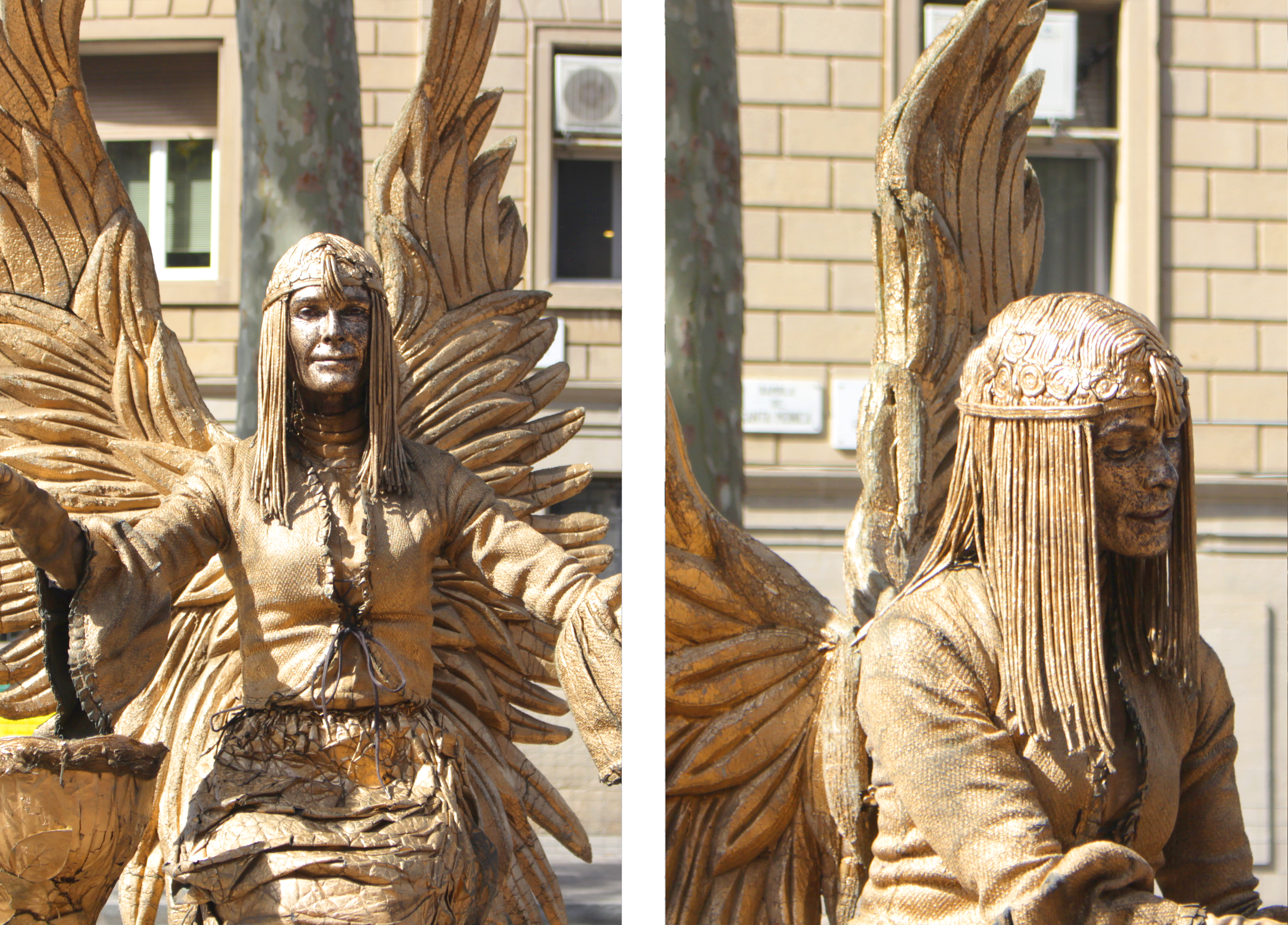
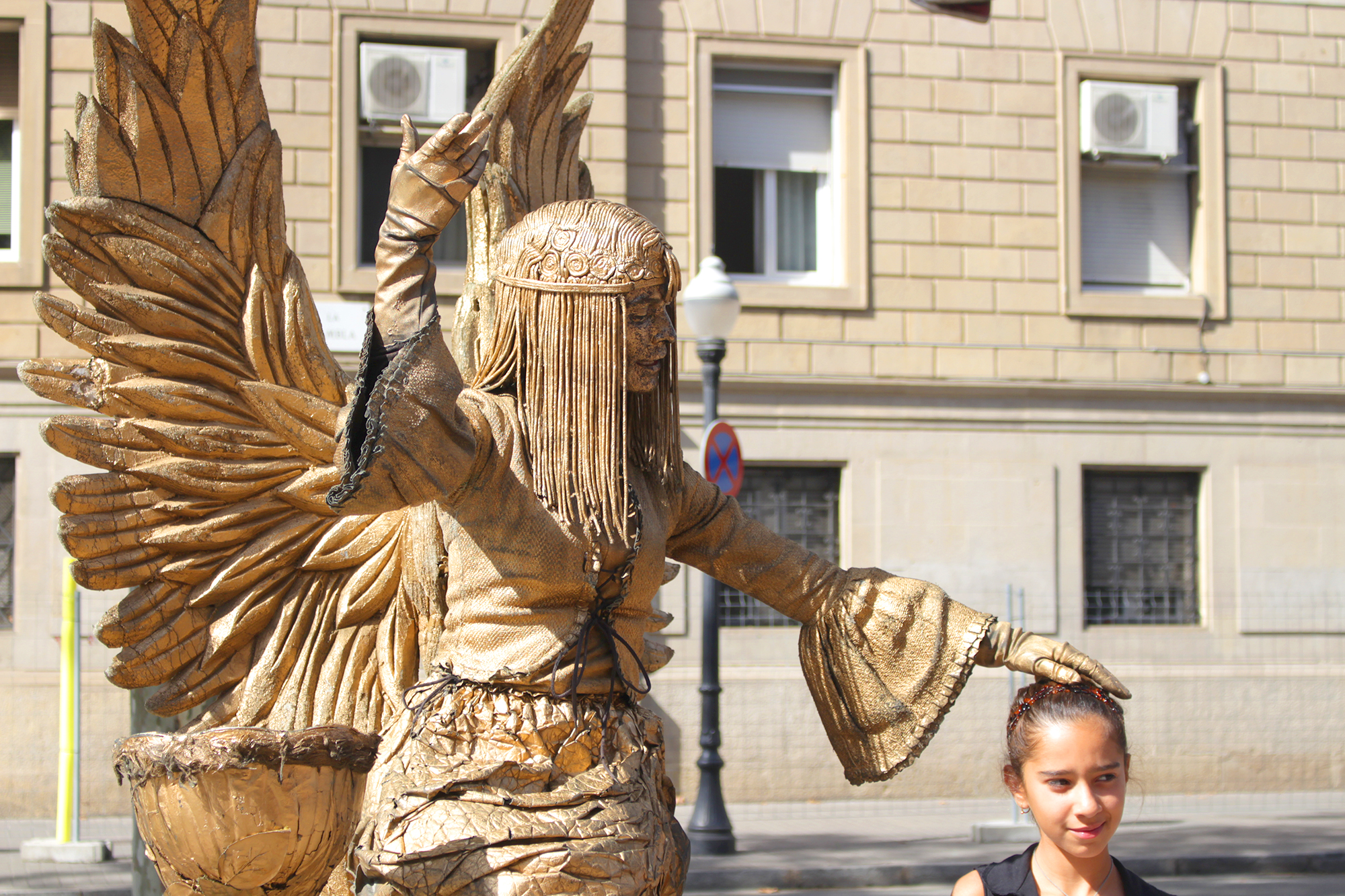

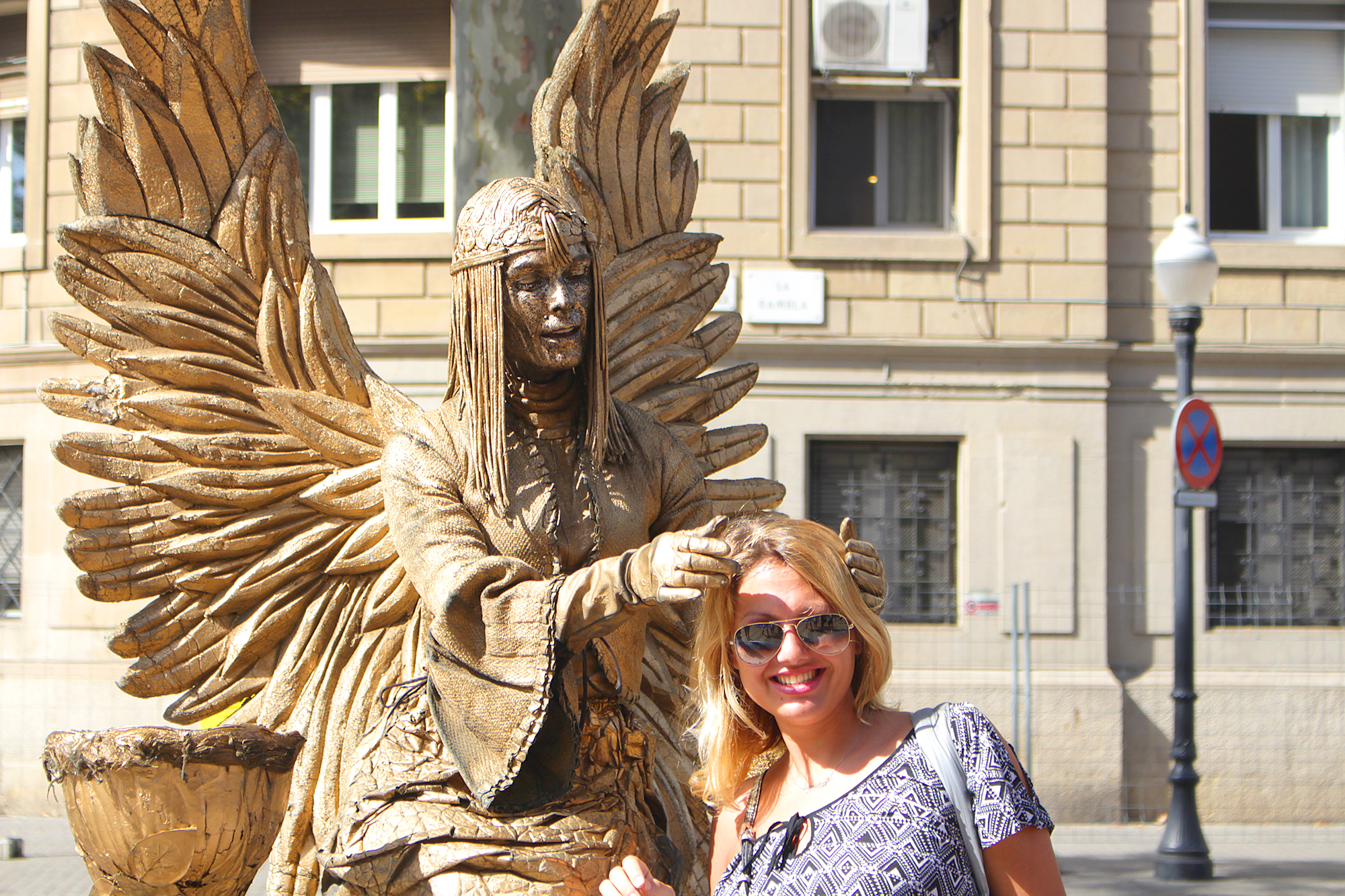
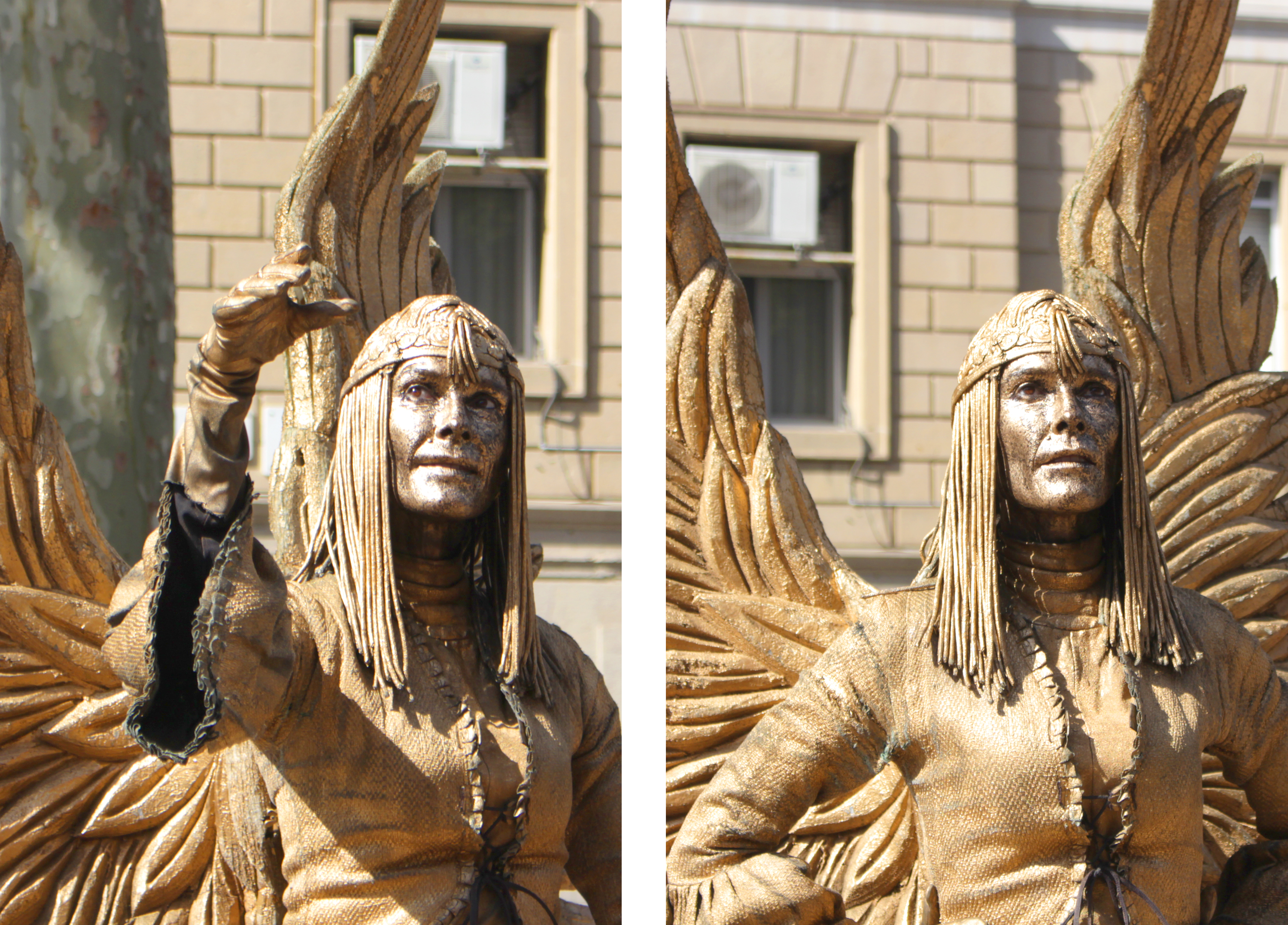

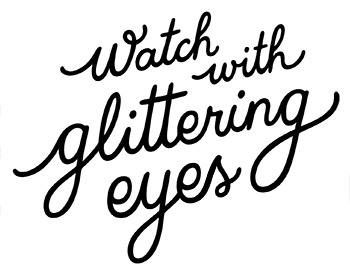
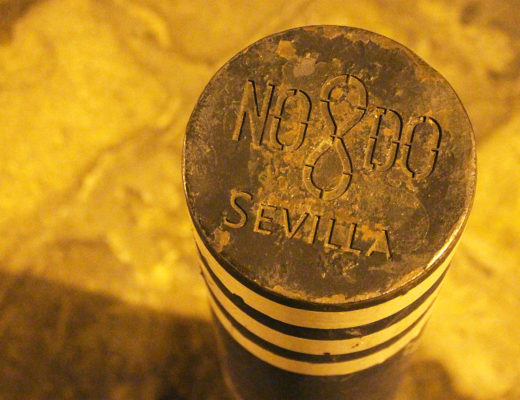
No Comments